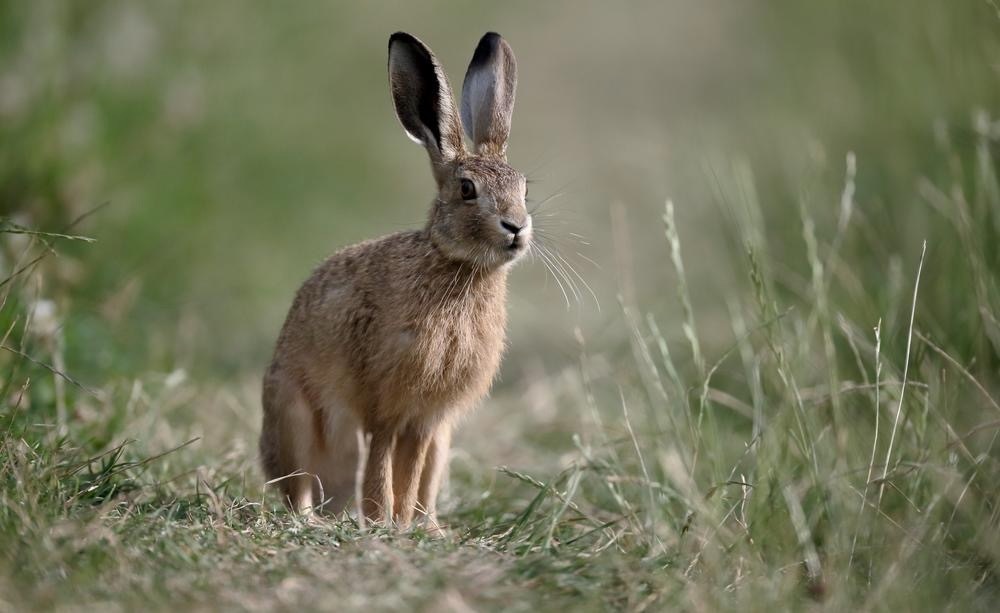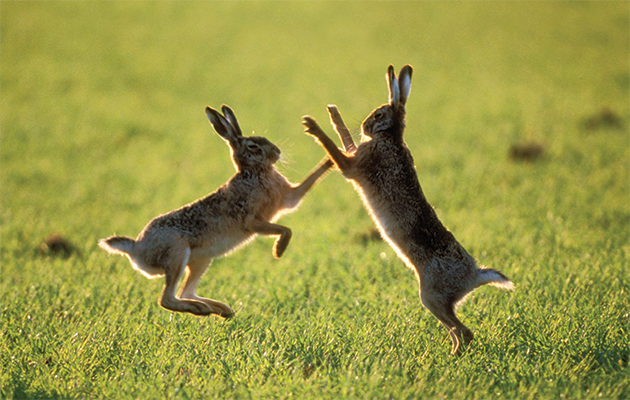The Rossendale Hare
The Brown Hare in the wild.

Hares are thought to have been introduced into the UK in Roman times, and possibly even earlier. The Brown Hare is most commonly seen on open farmland, in grassland habitats and at woodland edges. The male hare is called a Jack, and a female hare a Jill. A group of hares is called a drove, a down or a husk. Young hares are known as leverets. Hares don't burrow, but live on open grassland; their young born separately in flattened grass areas known as forms, where the mother hares return to suckle them at dusk.
Hares are the fastest land mammal in Britain. Brown Hares have large eyes and ears and can usually detect predators long before they are seen themselves. They rely on running to get themselves out of danger, reaching speeds of 40 miles per hour at full pelt,
As a result of their secretive nature and their speed, they are usually difficult to see close to. Sometimes in the early Spring they can be seen 'boxing', giving them the reputation of 'Mad March hares'. The fighters are actually the females, spurning the advances of males by boxing away prospective partners.

Hunting the Hare
Another reason for the decline is that the hare is the only game species in Britain which does not have a shooting close season, and since the breeding season is well under way by February, orphaned leverets are left to die of starvation. Hares do have a remarkable ability to recover from such slaughter but the effects of these shoots are clearly enormous.
The Pendle Forest and Craven Harriers, a hare hunt covering Lancashire and North Yorkshire and based at kennels at Coniston Hall near Skipton, are disbanding. They join a long list of hunts folding as landowners and the public turn more and more against them.
The Hunt made the announcement on 12 March, saying that the hunt committee had taken the ‘sad decision‘ because ‘of the difficulty...in seeing a sustainable, viable, and tenable future‘ for the pack and that therefore ‘the 2024/25 season will be the last‘ after 255 years of chasing and killing hares.
